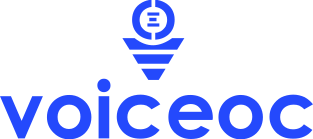6 Key Strategies to Reduce Operational Costs in Healthcare Sector
Businesses continually strive to lower operating costs as a means to enhance their market competitiveness. Through innovative solutions and strategic planning, lowering these costs can lead to significant improvements in profitability and operational agility.
Navigating economic uncertainties and competitive pressures, businesses are increasingly focusing on operational efficiency as a cornerstone of financial health.
Operational costs – encompassing utility bills, labor, inventory management, and more—play a crucial role in your company’s profitability.
Let’s put it simply: Managing these costs effectively is like fine-tuning your car’s engine for better mileage. It’s not about skimping on quality but ensuring every resource contributes to your journey towards success.
Managing operating expenses is crucial for maintaining a healthy bottom line. By closely monitoring these day-to-day costs, businesses can identify opportunities for savings that don’t compromise the quality of their operations.
Here’s how you can start:
A comprehensive strategy to tackle operating costs involves a detailed analysis of both fixed and variable expenses.
Businesses that succeed in optimizing these variable costs often enjoy enhanced operational efficiency and improved profit margins, underscoring the importance of a meticulous approach to financial management.
● Evaluate Direct Costs: Look closely at your expenditures. Are there areas where efficiency can be improved without sacrificing output?
● Optimize Utilities: Adopt energy-efficient practices that can lead to significant savings on utility bills.
● Rethink Subscriptions: Audit your services and subscriptions. Canceling unused services can free up resources for more critical investments.
● Empower Your Team: Engage your employees in identifying cost-saving opportunities. Their insights can lead to innovative solutions that reduce expenses without impacting morale.
By adopting a strategic approach to reduce operational costs, you not only bolster your cash flow but also position your business for sustainable growth.
Let’s dive deeper into these strategies, armed with actionable advice and a commitment to efficiency. Together, we’ll explore how smart decisions today can lead to a more prosperous tomorrow.
What are Operational Costs?
Operational costs are your business’s day-to-day expenditures—those that keep the lights on and the wheels turning. These include:
● Utility bills: Keeping your workspace lit and climate-controlled.
● Labor costs: Salaries, wages, and benefits for your hardworking team.
● Inventory management: Ensuring you have the right products at the right time.
In contrast, other business expenses might emerge less frequently or unpredictably, like upgrading your software systems or emergency repairs.
The Spectrum of Operational Costs: From Fixed to Variable
Operational costs come in two main varieties:
● Fixed Costs: These are your steadfast expenses, unchanged month-to-month, such as rent and insurance.
● Variable Expenses: These fluctuate based on business activity. Think raw materials for your products or overtime pay during peak seasons.
To nudge your operational costs in a more favorable direction, consider the following actionable steps:
● Audit Utility Usage: Small changes, like switching to energy-efficient lighting, can lead to significant savings on utility bills.
● Streamline Inventory: Avoid overstocking through better inventory management, minimizing storage costs and waste.
● Optimize Labor: Ensure your team is utilized efficiently, reducing the need for overtime while maintaining productivity.
By understanding and strategically managing these costs, you’re not merely cutting back on unnecessary expenses—you’re paving the way for your business’s sustainable growth and profitability. Remember, it’s not about spending less, but about spending smart.
The Role of Technology in Cost Reduction
Leveraging technology has proven to be a game-changer for businesses looking to significantly reduce operational costs. From automating manual processes to utilizing data analytics for strategic decision-making, the digital transformation is paving the way for cost-efficient operations.
In today’s fast-paced business world, technology stands as a beacon of efficiency, offering innovative solutions to reduce operational costs.
From inventory management to energy consumption, let’s explore how technology can be a game-changer in your quest to cut expenses.
1. Leverage Inventory Management Software and Online Systems for Efficiency
Imagine the ease of tracking your stock levels in real-time, identifying slow-moving items, and forecasting demand with precision. This is the power of modern inventory management software.
By adopting these online systems, businesses can avoid overstocking, minimize storage costs, and significantly improve cash flow.
Remember Joe from Joe’s Gadget Garage? He saved thousands by simply switching to an automated inventory system that flagged excess orders before they became a financial drain.
2. Energy-efficient Equipment and Its Impact on Utility Costs
Switching to energy-efficient equipment is like hitting two birds with one stone: you reduce operational costs and contribute to environmental sustainability. Consider the transition to LED lighting or high-efficiency HVAC systems.
These upgrades can lead to substantial savings on utility bills, with the bonus of potentially qualifying for green tax credits.
A bakery in Vermont, for example, cut its energy bill by 30% just by upgrading to an energy-efficient oven.
Also Read: The Future of IVR AI: How AI is Shaping Next-Generation Systems
Strategies for Optimizing Operational Expenses
Optimizing operational expenses is essential for businesses looking to enhance efficiency and boost their bottom line.
By adopting strategic measures, companies can not only cut costs but also improve productivity and sustainability.
1. Streamline Business Functions to Improve Cash Flow
A deep dive into business costs reveals opportunities for optimization that go beyond surface-level adjustments. By cultivating a culture that prioritizes efficiency, businesses can uncover innovative ways to manage their financial resources more effectively, leading to substantial cost savings.
Efficient small business functions that are crucial for a healthy cash flow. Consider these steps:
Automate Repetitive Tasks: Utilize software to handle tasks like data entry and billing, reducing the need for manual labor and minimizing errors.
Implement Automatic Payments: This ensures timely bill payments, avoiding late fees and improving creditworthiness.
Efficient management of the cost of goods sold can significantly influence a company’s cash flow. By optimizing inventory levels and production processes, businesses can ensure that their goods sold contribute positively to their financial performance.
2. Innovative Approaches to Reduce Energy Usage and Cooling Costs
Reducing energy consumption is both cost-effective and environmentally friendly:
Upgrade to Energy-Efficient Equipment: Invest in LED lighting and Energy Star-rated appliances.
Smart Cooling Systems: Use programmable thermostats and energy-efficient cooling solutions to keep costs down.
3. Administrative Innovations to Cut Costs
Automating repetitive tasks such as data entry, scheduling, and even customer inquiries through AI chatbots can free up valuable employee time for more strategic activities.
Moreover, implementing automatic payments ensures that bills are paid on time, avoiding late fees and maintaining a healthy credit score.
Optimizing back-office operations can lead to significant savings in operational cost:
Digital Inventory Management: Adopt cloud-based inventory systems to track stock levels accurately, reducing overstock and understock situations.
Streamlined Customer Support: Use AI-driven chatbots for basic customer inquiries to the customer support team free up staff for more complex issues.
4. Human Resource Management for Reducing Operating Expenses
The debate on hiring freelancers versus full-time employees has never been more relevant. For project-based work, freelancers can offer a cost-effective solution without the ongoing commitment of full-time salaries and benefits.
A strategic approach to HR can significantly reduce operating costs:
Freelancers vs. Full-Time Employees: For project-based or seasonal work, hiring freelancers can be more cost-effective than full-time staff.
Focus on Employee Satisfaction: Happy employees are more productive and less likely to leave, reducing recruitment and training costs.
5. Rethinking the Physical Workspace
The traditional office space is undergoing a transformation, with more businesses embracing remote work. This shift can dramatically reduce the need for physical office space, saving on rent and utilities.
The traditional office model is evolving:
Leasing vs. Owning: Consider leasing office space to avoid the long-term financial commitment and maintenance costs of owning property.
Remote Work Strategies: Implementing remote work can reduce the need for large office spaces, saving on rent and utilities.
6. Financial Health: Beyond Mere Cost Cutting
Reducing operational costs goes beyond mere penny-pinching; it’s about strategic decision-making that aligns with your company’s long-term goals.
A healthy operating expense ratio is a testament to efficient operations, and technology plays a pivotal role in achieving this balance. Tracking and managing expenses incurred is vital for any small business owners aiming to streamline its financial operations.
By maintaining a clear record of all expenses, companies can make informed decisions that bolster their efforts to reduce operational costs and improve efficiency.
Sustaining financial health involves more than just your income statement reducing expenses:
Healthy Operating Expense Ratio: Regularly review and optimize your expense ratio to ensure operational efficiency.
Strategic Cost Reduction: Focus on cutting costs in ways that don’t compromise product quality or employee satisfaction.
By employing these strategies thoughtfully, businesses can keep variable costs change achieve a more streamlined, cost-effective operation. The key is to balance cost reduction with quality maintenance, ensuring long-term sustainability and growth.
Also Read: How Can Voice Automation in Healthcare Be a Game Changer in The Future of Patient Care
Ethical and Sustainable Cost Management
Incorporating energy-efficient practices not only supports environmental sustainability but also offers significant savings. Companies are increasingly adopting green technologies to both save time and money demonstrating that cost reduction can go hand in hand with ecological responsibility.
Navigating the path to significantly reduce operational costs with an ethical compass and a sustainability mindset isn’t just commendable; it’s becoming a necessity in today’s business environment.
Ethical cost management is about making informed decisions that reflect not only on your balance sheet but also on your company’s integrity and commitment to the future.
1. Addressing the Ethical Considerations in Cost Reduction Strategies
Ethical considerations in cost reduction are paramount.
For instance, while seeking to lower operating costs, it’s essential to ensure that such strategies do not compromise employee well-being or lead to environmental degradation.
A tech company, for example, opted to enhance its operating expense ratio by adopting energy-efficient equipment.
This move not only reduced utility costs but also demonstrated a commitment to environmental sustainability, appealing to eco-conscious consumers and improving the company’s market positioning.
2. Building a Cost-Conscious Culture Without Compromising on Quality or Values
Fostering a cost-conscious culture is pivotal in sustainable cost management. This involves:
● Promoting Efficiency: Encourage practices like minimizing waste and utilizing compact fluorescent lighting, which not only save money but also align with green initiatives.
● Emphasizing Quality: Ensure that efforts to reduce business costs do not lead to a decline in product quality or dilute the brand’s value proposition.
● Valuing Human Capital: In the quest to reduce spending, consider the human element. For example, investing in employee training programs can improve efficiency and job satisfaction, indirectly reducing costs associated with high turnover rates.
In building this culture, it’s crucial to balance cost-saving measures with a commitment to maintaining high standards in product quality and ethical practices.
This approach not only secures financial health but also solidifies your company’s reputation as a responsible and forward-thinking entity
3. Practical Steps for Ethical Cost Management
● Leverage Technology: Implementing inventory management software can significantly reduce operational expenses by optimizing stock levels and reducing excess inventory costs.
● Sustainable Practices: Shift towards more sustainable business functions, like digital marketing communications over traditional print materials, to cut down on printing costs and environmental impact.
● Employee Engagement: Encourage your team to identify cost-saving opportunities, fostering a sense of ownership and accountability. For instance, switching to automatic payments can streamline administrative tasks and reduce operational expenses.
Adopting ethical and sustainable cost management strategies is not just about enhancing profitability; it’s about setting a foundation for long-term success that respects both people and the planet.
By integrating these principles into your cost reduction efforts, you can achieve a competitive edge that resonates with today’s conscientious consumers and workforce.
● Addressing the ethical considerations in cost reduction strategies
● Building a cost-conscious culture without compromising on quality or values.
Also Read: Leveraging AI In Healthcare Sector
Revolutionizing Operational Efficiency in Healthcare with Voiceoc
In the dynamic realm of healthcare, operational efficiency is not just a goal; it’s a necessity.
Enter Voiceoc, a groundbreaking tool designed to harness the power of conversational AI, fundamentally transforming how medical practices interact with their patients and manage internal processes.
Voiceoc leverages patient conversation data, offering healthcare providers a comprehensive understanding of patient interactions.
This real-time insight into patient behavior—ranging from service requests to engagement levels with AI—equips medical professionals with the knowledge to make informed decisions, enhancing patient care and operational efficiency.
The platform’s sentiment analysis engine delves deep into patient sentiments, providing a clear picture of their experience with your service. This feedback is invaluable, enabling practices to adapt and improve continuously. Furthermore, the convenience of downloading conversation data in a structured format allows for swift and thorough analysis, turning raw data into actionable insights.
A standout feature of Voiceoc is its capacity to optimize customer care agent productivity. With AI handling 90-95% of patient inquiries, the system ensures that the transition to human agents, when necessary, is seamless and efficient.
This dual approach not only maintains high-quality patient experiences but also boosts the productivity of your customer care team by monitoring their performance and providing essential feedback metrics.
Voiceoc also simplifies appointment management, streamlining the booking process and ensuring no patient is left unattended. This efficiency is pivotal in reducing operational costs by minimizing missed appointments and optimizing staff allocation.
The core of Voiceoc’s innovation lies in its NLP-driven intelligence, offering a ‘free flow contextual’ AI journey.
Unlike traditional systems, Voiceoc’s AI understands patient intent, facilitating a human-like interaction that enhances engagement and satisfaction. This advanced approach has proven to significantly increase conversion rates and improve the overall patient experience.
By integrating Voiceoc into your healthcare practice, you’re not just adopting a tool; you’re embracing a strategy that reduces operational costs, improves patient care, and sets a new standard in healthcare efficiency.
Conclusion
In the quest to reduce operational costs, the convergence of innovation and strategy emerges as the linchpin for transformative efficiency in healthcare.
By integrating advanced tools like Voiceoc and embracing AI-driven solutions, healthcare providers can unlock new horizons of patient care and operational excellence.
These technologies not only streamline patient interactions and internal processes but also offer a deep dive into data analytics, fostering a culture of continuous improvement and patient-centric care.
Voiceoc is revolutionizing healthcare communication with its advanced conversational AI platform, designed to enhance patient engagement while significantly reducing operational costs.
By intelligently handling up to 95% of patient inquiries, Voiceoc ensures a seamless experience, enabling healthcare providers to focus on delivering top-tier care.


